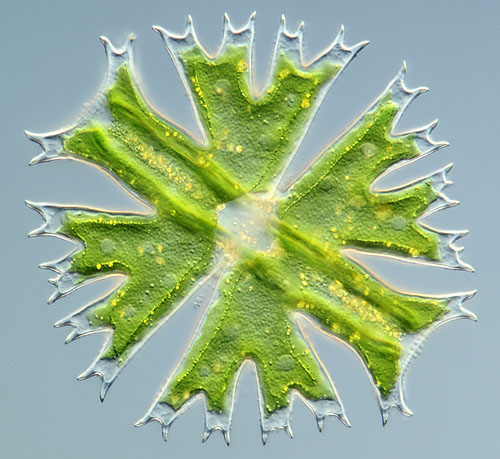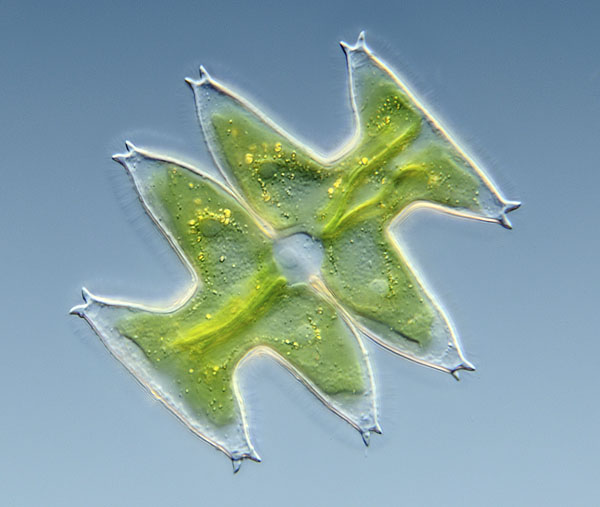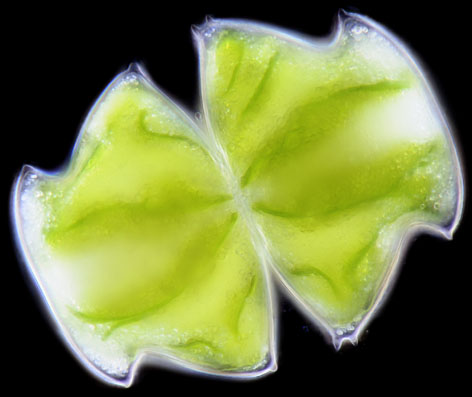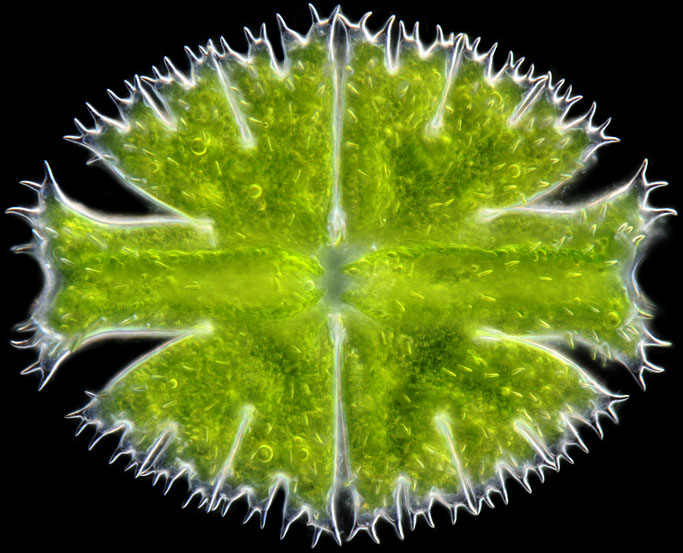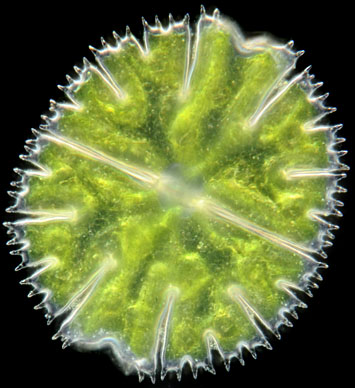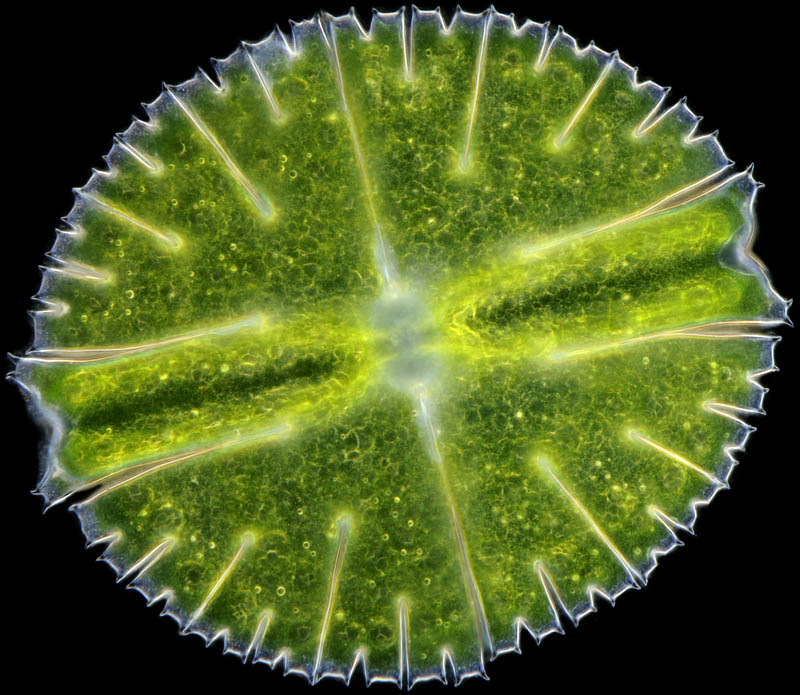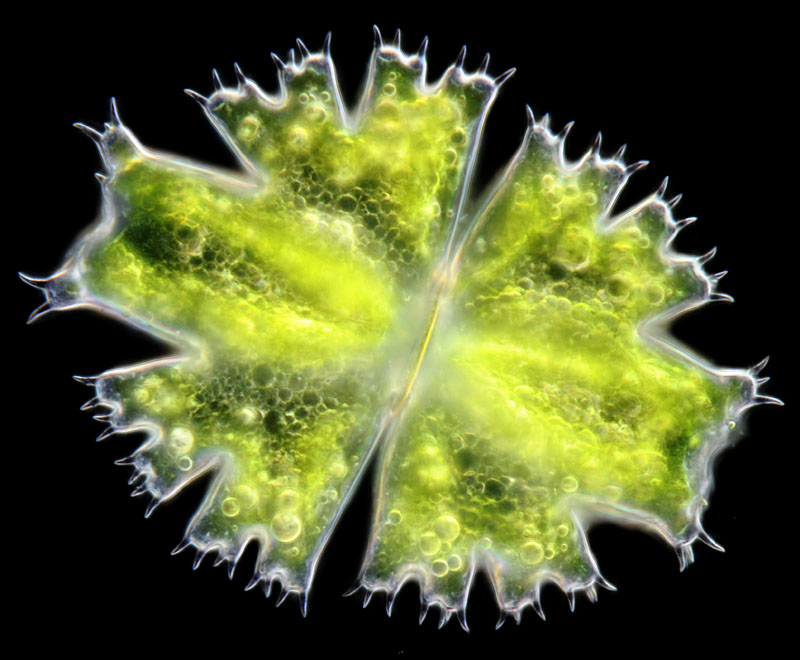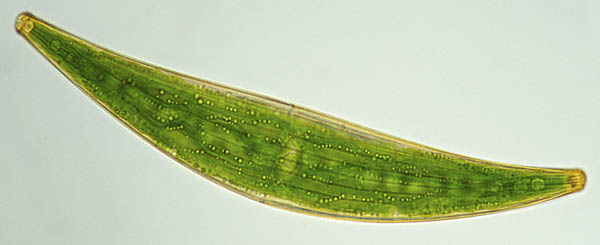| Micro Star Gazing by Wim van Egmond, the Netherlands
dedicated to Bill Ells, a sadly missed desmid enthusiast |
Most peopleís favourite activity is doing as little as possible. That is why we have hobbies. Itís great to have a hobby. To do things that are basically useless. The most popular hobbies are actually based on our instincts. For a long period the human species has survived by being a hunter gatherer. During recent times we have found an easier way of living, we developed agriculture and started growing our own food instead of searching for it. Nowadays most of us don't even grow our own food anymore. We try to grow money instead. And the nearest we come to our ancient hunter gatherer behaviour is when we wheel our shopping cars through the supermarket. |
|
However, for our hobbies we still prefer to be hunter gatherers. People create collections of the most unusual items. And often these collections aren't actual objects. Bird watchers for example collect sightings. The wonderful thing is that these collections donít take up much space. People who like fishing have another approach. They throw back what they collect or eat it. It's a great pastime simply looking at things. Take for example astronomy. All you have to do is sit behind a telescope and watch.
|
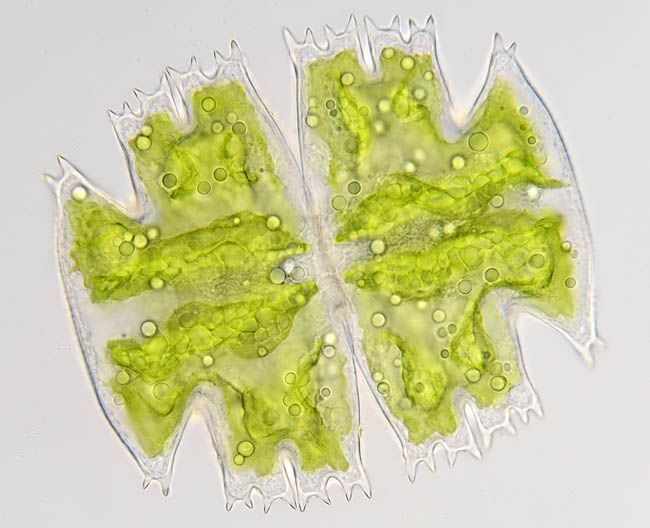 Micrasterias
truncata Micrasterias
truncata |
Unfortunately all these hobbies have major disadvantages. If you are a bird watcher you have to wake up much too early and hope itís not raining. If you are into astronomy and want to be a star gazer you have to stay up all night and hope that there are no clouds. And unless you have the budget for a Hubble space telescope you will probably not see much more than specks on a dark background. But there is a solution. There is a hobby that combines all these hobbies, without the drawbacks; it is called micro star gazing. I have been practicing it for years. Desmids (Desmidicaea) are among the most beautiful life forms that can be found in nature. They are single-celled green algae and for the micro hunter gatherer one genus is the prize game. Micrasterias, the name meaning little star. Micro star gazing combines all aspects you want for a hobby. You don't have to worry about bad weather. You can practice it at any time of the day. You can hunt, you can gather and you can just sit and watch. Like bird watchers you can try to keep a record and collect all known species but without being subjected to the constant tweeting which makes birds so particularly irritating. All you need for micro star gazing is a microscope. You do have to go out to collect samples but you can choose a nice sunny day for that. And unlike normal fishing you donít have to wait the whole day for a single catch. The hunt only lasts a couple of minutes and you always win. |
|
Since most desmids require very special water conditions some species are very rare. This Micrasterias pinnatifida can only be found in a few places. One of the priceless trophies for the micro star gazer. |
The recipe for micro star gazing is simple, go to a marsh, find a moist patch of sphagnum moss, or some of the plants that are known to attract micro stars like Eriophorum. Squeeze the water from the plants in a jar and you will have enough material to enjoy many weeks of amazement. Because the water is acidic and poor of nutrients it will stay healthy for a very long time. |
The following series of dark field images shows some of the basic shapes and the relative sizes. |
Micrasterias oscitans |
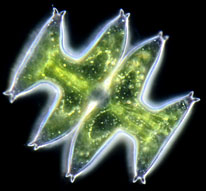 Micrasterias pinnatifida |
|
|
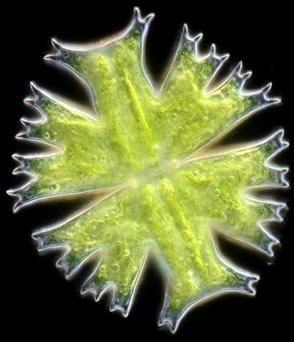 Micrasterias crux-melitensis |
|
|
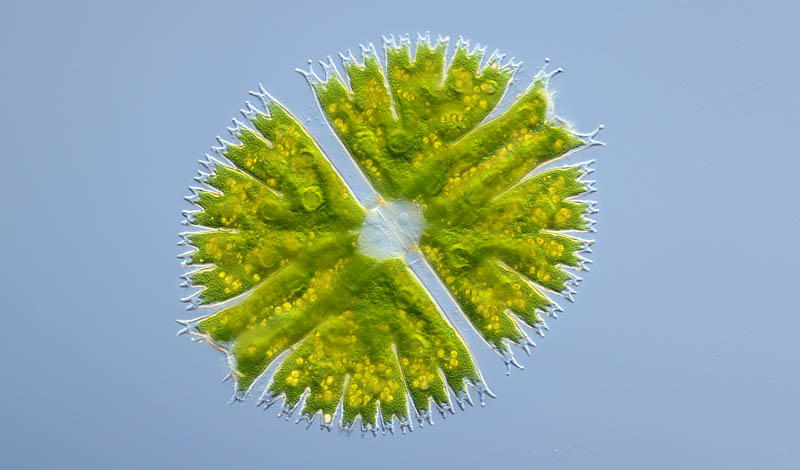 |
Desmids
multiply by fission, asexual reproduction. Here we see a cell
division of Micrasterias fimbriata. |
|
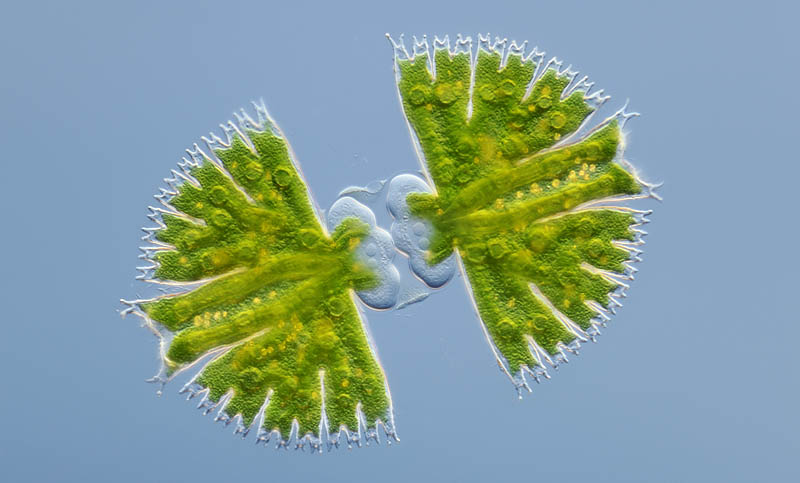 |
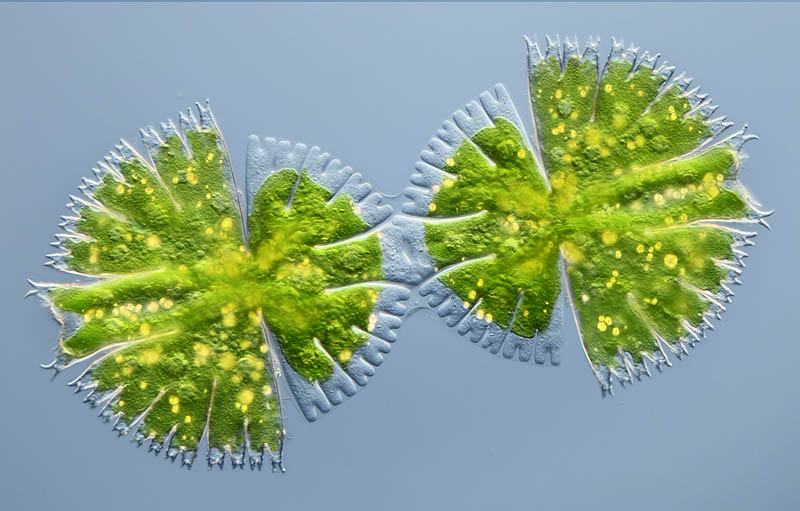 |
|
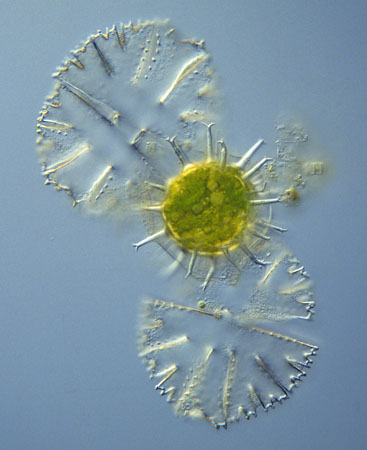 |
Sex also occurs. Two cells exchange genetic information (this is called conjugation) and afterwards a zygospore is formed. This resting stage can withstand harsh conditions. |
Micrasterias brachyptera |
But
what to do after you have captured all the Micrasterias
species and completed the series. Don't worry,
then you can
always
start collecting Closterium, another
desmid genus with a completely different body plan.
But that is something for another story, which will be titled:
|
Comments to the author Wim van Egmond are welcomed.
Visit the Micropolitan Museum
Microscopy UK Front Page
Micscape Magazine
Article Library
all material © Wim van Egmond
